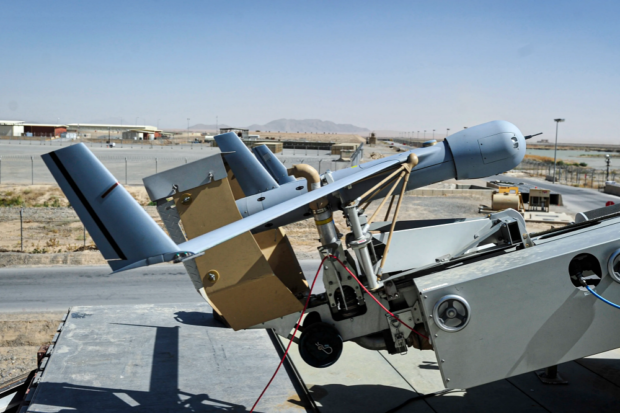, the U.S. base in Jordan where three American service members were killed last month, is not simply a “logistics support base,” as the Pentagon has described it.
What the Pentagon hasn’t mentioned is that Tower 22 is also a drone base conducting long-range reconnaissance on militants in neighbouring Syria and Iraq for airstrikes, according to two U.S. military sources. The base also serves as a staging facility for special operations forces and a medevac helicopter home base.
And while the Pentagon says Tower 22’s mission was to combat the Islamic State, or ISIS, since Hamas’s assault on Israel in October, its focus has turned to Iran-backed militia groups.
“To call Tower 22 a logistics support base is complete bullshit,”
an Air Force airman, whose unit was recently stationed at the base, told The Intercept. Logistics was a small part of the mission, amounting to weekly food and fuel deliveries to the nearby Al-Tanf base.
“The main purpose of Tower 22 is to operate drones to spy on insurgents in Iraq and Syria, for targeting purposes,” the airman said. “The main objective I witnessed was taking out targets.”
Tower 22 provided targeting intelligence to Air Force assets stationed at other bases in Jordan, such as Muwaffaq Salti Air Base, to use in strikes, the airman said.
An early news story on the drone attack that killed the U.S. service members cited unnamed officials discussing a preliminary report that the drone managed to enter Tower 22 because it was mistaken for another friendly drone returning to the base. (The Intercept later reported that the base lacked adequate air defenses.) Despite the account pointing to a drone presence, few questioned the Pentagon’s refrain that base’s purpose was logistics.
In interviews with defense sources and experts, however, a picture emerges of Tower 22’s purpose as a key base from which to support hostilities with Iran-aligned groups, even as the Biden administration insists that it does not want war with Tehran. The shift in its mission, from fighting ISIS to fighting groups linked with Iran, has not been acknowledged by the Defense Department, which still insists that this is part of its war on ISIS. (The Pentagon did not respond to a request for comment.)
Secretary of Defense Lloyd Austin said that the troops killed by a kamikaze drone on January 28 were deployed there “to work for the lasting defeat of ISIS.” U.S. forces continue to operate in Syria under the legal basis of Operation Inherent Resolve, the Pentagon’s name for the international campaign against ISIS that began in 2014. But experts say it’s unlikely that counter-ISIS mission is the main focus.
Brian Finucane, a former State Department legal adviser and now with the International Crisis Group, a think tank that works to prevent and resolve wars, said,
“Whatever they’re doing there, there’s very little evidence that it’s counter-ISIS.”
Counter-ISIS Mission?
When ISIS was driven from their strongholds years ago, the withdrawal of U.S forces from Syria finally seemed within reach. “We have defeated ISIS in Syria, my only reason for being there,” former President Donald Trump said in 2018, later announcing that he would withdraw all U.S. troops from the country.
Finucane explained that Trump was outmaneuvered by hawks, like his national security adviser at the time, John Bolton, who wanted to maintain the troop presence but with a new focus: Iran.
One of Tower 22’s functions is to provide support to Al-Tanf, a nearby U.S. military base in Syria whose official purpose is to combat ISIS. A Pentagon inspector general report last year found that there were “no kinetic engagements,” or combat incidents, by coalition forces at Al-Tanf.
While Tower 22 may have provided logistics such as food and fuel for training operations at Al-Tanf, the lack of combat involving troops at the larger base indicates a diminished role for both facilities in the fight against ISIS.
“If Tanf doesn’t have a counter-ISIS function, it’s hard to see how a support facility for Tanf does,”
said Finucane.
The inspector general report, covering data through September 30, preceded Hamas’s October 7 attack on Israel. Israel’s retaliatory war in Gaza has spurred an intensified conflict with Iranian-backed groups in the region. The group that claimed credit for the attack on Tower 22 that killed three troops cited as its motivation U.S. support for Israel in the war, as The Intercept has previously reported.
Source: The Intercept

